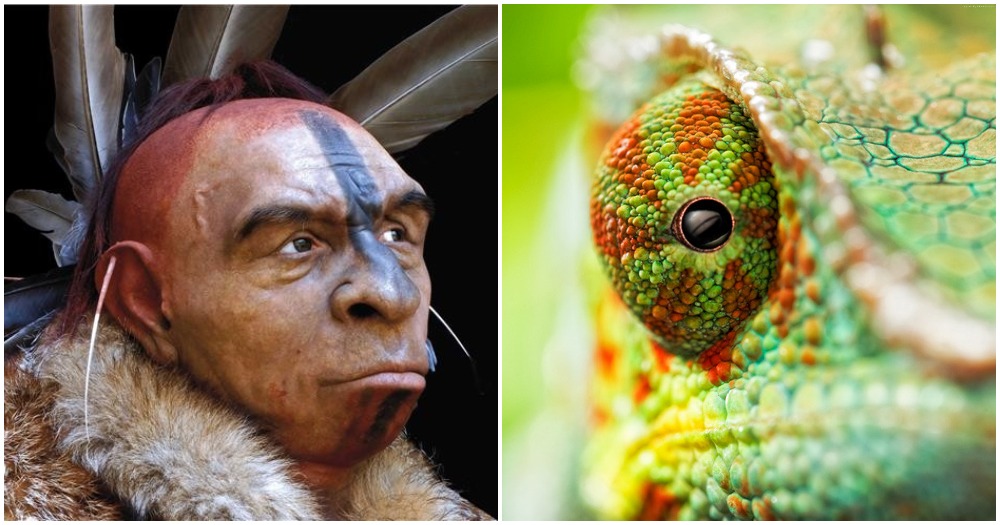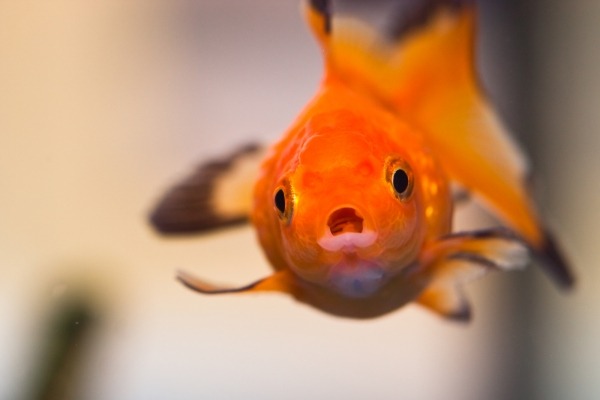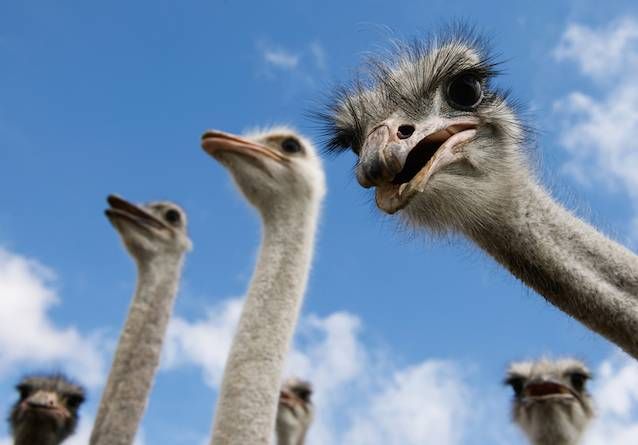
7. Neanderthals were a less evolved human ancestor
First of all, let’s get one thing straight: Neanderthals aren’t ancestors to modern humans. The two species lived at the same time, mostly in different areas of the globe. When the species did cross paths, there’s even evidence that they interbred. But the evidence doesn’t suggest they were cognitively inferior to humans. Fossils show Neanderthals made tools, used fire, cleaned their teeth, ate medicinal plants, buried their dead, and maybe even cared for their sick and wounded. Scientists no longer think Homo sapiens wiped out their Neanderthal cousins. Neanderthals likely were already dying out as the climate changed, while modern humans’ trade networks, diverse diets, and innovative tools helped them survive.

8. Earth is the only planet with water
Of course, we have yet to find any intelligent life living off interstellar water, but H2O isn’t unique to Earth. Dark streaks that change on Mars suggest there isn’t justice on the Red Planet—liquid salt-water likely flows on it. What’s more, NASA discovered that beneath a layer of ice on Jupiter’s moon Europa, there’s an ocean containing twice as much water as we have on Earth. Could faraway planets with water sustain intelligent life? Only time will tell.

9. It takes seven years to digest chewing gum
Don’t freak out if you can’t find a trashcan and need to swallow your gum. The truth is that your body can’t digest gum, not even in seven years. That doesn’t mean it sticks inside your system, though. It will pass through your digestive system without being broken down, then come out in the bathroom like anything else. If kids swallow too much, the gum could block their intestines, but that’s extremely rare. Don’t miss these other 21 common food myths you need to stop believing.

10. Goldfish have three-second memories
Fish are smarter than you thought. One study found the freshwater fish African Cichlids could remember the feeding zone of an aquarium after moving to a different tank for 12 days. Lest you think goldfish are any different, another study looked specifically at goldfish and whether they could tell the difference between two different classical songs. They weren’t quick learners, but after more than 100 sessions, the fish would bite a bead associated with the correct song 75 percent of the time. If their memories were really three seconds, that kind of training wouldn’t be possible. Find out why we’re so likely to remember (and repeat) false information.

11. A penny dropped from the Empire State building could kill
The story goes that even an innocent penny dropped from the 1,250-foot-tall Empire State Building would build up enough speed on the way down to kill a bystander below. In reality, though, it wouldn’t do much damage—if any. First of all, air resistance called “drag force” would mean the penny would stop accelerating at some point, and reach its max speed about 50 feet from its drop point, according to Scientific American. By the time it reached the ground, it would be moving just 25 miles per hour. That might sting, but it wouldn’t be enough force to break your skull. MythBusters took the theory to an extreme and shot a penny at 3,000 feet per second, but even that wasn’t strong enough to break bones. (For more Americana myth-busting, read these false “facts” about U.S. presidents that everyone still believes.)

12. Ostriches bury their heads in the sand
The birds would die of suffocation if they actually stuck their heads underground when scared. Instead, they actually lie with their head and neck flat against the ground if a predator is approaching. Their light-colored head and neck blend in with the ground, which could explain why people assumed their heads were underground from far away, according to the San Diego Zoo. For more animal facts, check out the 12 of the smartest species on the planet.

